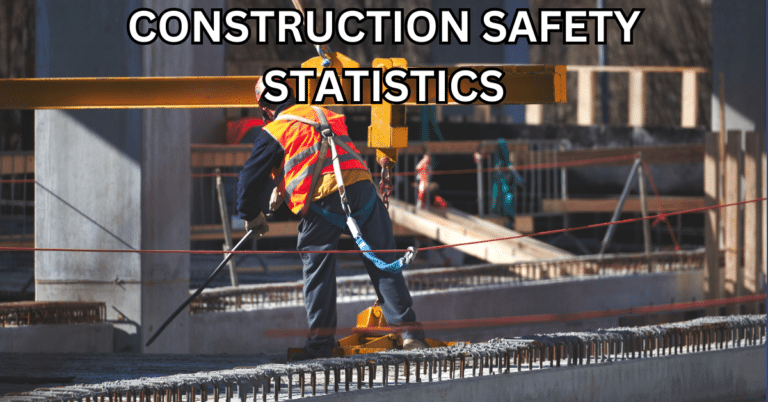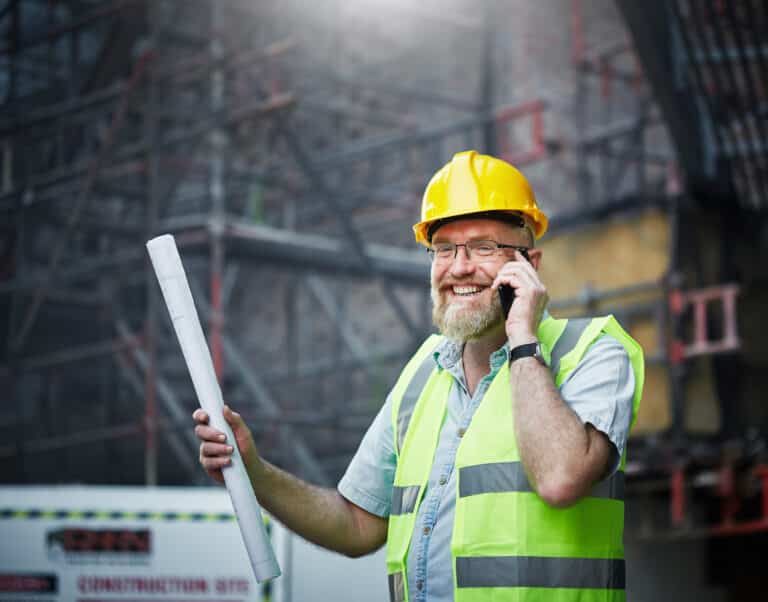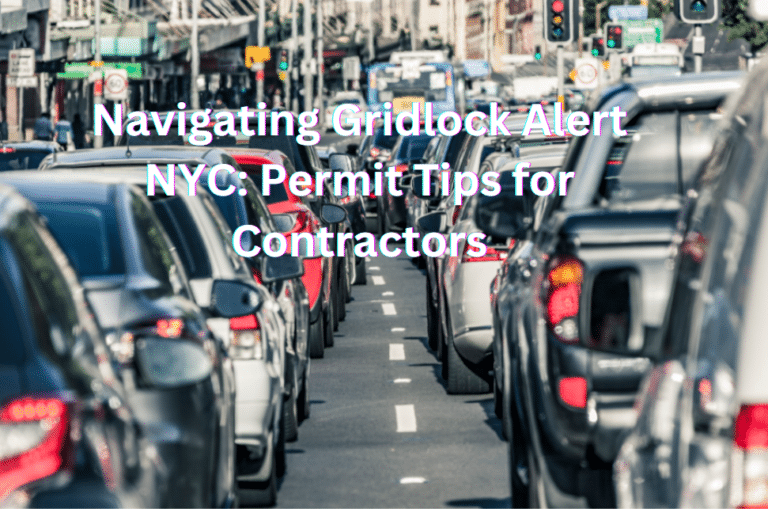Last Updated on January 23, 2025 by Jeffrey Calderon
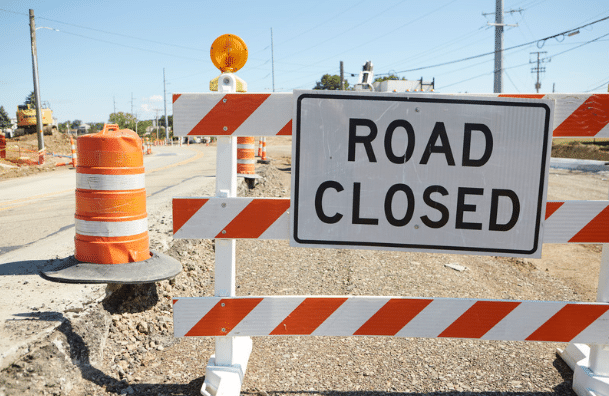
Navigating Construction Signs: 5 Essential Permits and Regulations
Construction signs are crucial in maintaining safety and organization at any job site. These essential tools not only protect workers but also ensure that passersby are aware of potential hazards.
In this blog post, we will delve into the various aspects of construction site safety signs, from obtaining permits to understanding regulations.
We’ll begin by discussing how to obtain a construction sign permit and explore the different types of construction signs available for use on-site.
Next, we’ll cover proper placement techniques to maximize visibility and effectiveness. Additionally, you’ll learn about the duration of these permits and how they impact your project timeline.
Lastly, we will discuss specific regulations governing construction site signs to help maintain compliance with local laws while promoting a safe working environment for all involved parties.
Obtaining a Construction Sign Permit
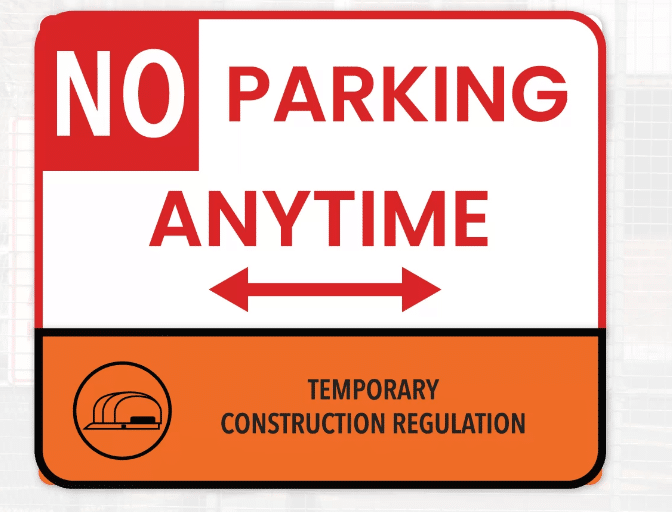
In New York City, homeowners and contractors must obtain the necessary permits before installing construction signs.
These permits ensure that all signage adheres to city regulations and maintains public safety.
This article will guide you through the process of applying for a construction sign permit in NYC.
Step 1: Determine the Type of Permit Needed
The first step in obtaining a construction sign permit is determining which type of permit your project requires. There are several types of permits available, including those for temporary construction signs, permanent signs, or changes to existing parking regulations. Consult with your contractor or visit the NYC Department of Transportation (DOT) website for more information on specific requirements.
Step 2: Gather Required Documentation
To apply for a construction sign permit, you’ll need to provide various documents depending on your project’s specifics. Some common documentation includes:
- A completed application form from the DOT.
- A detailed site plan showing proposed sign locations.
- Copies of any required approvals from other agencies (e.g., Landmarks Preservation Commission).
- Evidence that you have notified affected property owners about planned work zone changes.
Step 3: Submit Your Application Online or In-Person
You can submit your application online through the NYC Streets system or by visiting one of their borough offices during business hours. Keep in mind that there may be a fee associated with your permit application, which can vary depending on the type of sign and project duration. To get more info on costs, check out the DOT’s Fees page.
Step 4: Await Approval or Request for Additional Information
Once your application has been submitted, the DOT will assess it to ensure that all regulations are met; if any further details or clarifications are needed they may contact you, so be sure to respond quickly in order to expedite permit processing. Once your application has been reviewed, the DOT may contact you to request additional documentation or clarification; it is critical to respond quickly in order for processing of your permit not to be hindered. It’s essential to respond promptly to avoid delays in processing your permit.
Step 5: Receive Your Construction Sign Permit
If your application is approved, you’ll receive a construction sign permit that outlines any specific conditions or requirements for installing and maintaining signs at your work site. Be sure to follow these guidelines closely and keep a copy of the permit readily available during construction activities.
In summary, obtaining a construction sign permit in NYC involves determining the appropriate type of permit, gathering necessary documentation, submitting an application online or in-person at an NYC DOT office, awaiting approval or providing additional information if requested, and finally receiving your official construction sign permit.
Obtaining a Construction Sign Permit is an important step for any contractor working in New York City. Now, let’s take a look at the different types of construction signs available to obtain with this permit.
To install construction signs in NYC, homeowners and contractors must obtain the necessary permits to ensure compliance with city regulations and public safety. The process involves determining the appropriate permit type, gathering required documentation, submitting an application online or in-person at an NYC DOT office, awaiting approval or providing additional information if requested, and finally receiving your official construction sign permit.
Types of Construction Signs
Construction signs are essential for maintaining safety and order in work zones, as well as informing the public about ongoing projects. In New York City, there are various types of construction signs that cater to different purposes. This section will discuss some common types of construction signs used in NYC and their specific functions.
- Road Work Ahead: These signs alert drivers to upcoming construction zones, allowing them to slow down and prepare for any changes in traffic patterns or road conditions. Road Work Ahead signs can be found on NYC DOT’s website.
- Lane Closure: Lane closure signs inform motorists about closed lanes due to construction activities. They help manage traffic flow around the work zone by directing vehicles into open lanes.
- No Parking / No Standing: During certain phases of a project, it may be necessary to remove parking spaces or change parking regulations temporarily. No Parking and No Standing signs indicate areas where vehicles cannot park or stand during specified hours.
- Sidewalk Closed: Pedestrian safety is crucial during construction projects. Sidewalk Closed signs notify pedestrians that they must use an alternate route because the sidewalk is inaccessible due to ongoing work.
- Danger Zone Warning Signs: These include warnings such as “Hard Hat Area” or “Danger: Falling Debris.” They serve as reminders for workers and passersby alike that extra caution should be exercised within the designated area.
It is important to note that construction site safety signs typically have yellow backgrounds with black lettering. This color combination is highly visible and easily recognizable, even from a distance. Warning signs, such as those indicating fire exits or the location of fire extinguishers, often have red backgrounds with white or black letters.
When working on a job site, it is crucial to pay attention to all construction signs and follow their instructions. Failure to do so can result in accidents, injuries, or even worker fatalities. By using construction signs effectively, we can ensure the safety of workers and the public alike.
The kind of construction signs employed depend on their intent and position, so it is essential to be aware of which one ought to be chosen in order to observe local ordinances. Placement of these signs must also be considered when deciding which sign will best suit your needs.
Placement of Construction Signs
Understanding where and how to place construction signs in NYC is crucial for the safety of workers, pedestrians, and drivers alike. Proper placement ensures that all parties are aware of ongoing construction work, potential hazards, and any changes to traffic patterns or parking regulations.
A. Location Requirements
In New York City, construction sign placement guidelines dictate that signs must be installed at specific locations depending on their purpose:
- Construction Work Zone: Signs indicating a work zone should be placed at the beginning and end of the area where active construction is taking place.
- Removing Parking: If parking spaces need to be removed due to construction activities, “No Parking” signs must be posted at least 72 hours before enforcement begins.
- Changing Parking Regulations: When temporary changes to parking regulations are necessary (e.g., alternate side parking), appropriate signage should be displayed prominently within affected areas.
B. Visibility Considerations
To ensure maximum visibility for both motorists and pedestrians, consider these factors when placing your construction signs:
- Elevation: Ideally, install your sign between four feet above ground level for pedestrian-oriented signs up to seven feet above ground level for vehicular traffic-oriented signs.
- Distance from curb: Place your sign no closer than one foot from the curb edge but no farther than six inches beyond it.
- Obstructions: Avoid placing signs where they may be obscured by trees, utility poles, or other obstructions.
- Illumination: If possible, ensure that your sign is adequately illuminated during nighttime hours for optimal visibility.
C. Compliance with ADA Guidelines
When installing construction signs in NYC, it’s essential to comply with the Americans with Disabilities Act (ADA) guidelines. This includes ensuring that any temporary pedestrian routes are accessible and providing appropriate signage to guide individuals with disabilities safely through the construction area.
By adhering to these placement guidelines and regulations for construction signs in New York City, you can help create a safer environment for everyone involved in or affected by your project. Pay attention to the use of construction signs, construction site safety signs, construction site signs, safety signs, construction site, warning signs, yellow lettering, black lettering, work zones, yellow background, black letters, job site, fire exits, worker fatalities, fire extinguishers, and other safety measures. Make sure your sign placement and installation is both compliant with regulations and that it sends a clear message to everyone in the vicinity of the construction project. Safety on the job is paramount, and proper signage can help ensure this.
The placement of construction markers is an integral part in ensuring the success and safety of any building job, so it must be taken into account when devising a work area. Moving on to duration of permits, it is essential that all necessary paperwork be completed in order for the permit to remain valid over its designated period.
Proper placement of construction signs is crucial for the safety of workers, pedestrians, and drivers in NYC. Signs must be installed at specific locations depending on their purpose, with consideration given to visibility factors such as elevation and obstructions. Compliance with ADA guidelines is also essential when installing construction signs.
Duration of Construction Sign Permits
When designing a project in New York City, it is imperative to be aware of the period of validity for construction sign permits to guarantee that the undertaking runs smoothly and complies with all NYC building regulations.
Validity Periods for Different Permit Types
- Construction Work Zone: For most projects, the permit is valid for up to six months from the date of issuance. You can apply for an extension if your work zone requires additional time.
- Removing Parking: These permits are typically issued on a temporary basis and may be valid anywhere from one day to several weeks or months depending on the scope of work.
- Changing Parking Regulations: The validity period varies based on specific regulations being changed; however, these permits generally last between three months and one year.
Renewing Your Permit
In some cases, you may need to renew your permit if your project extends beyond its original timeline. To do so, submit a renewal application before the expiration date listed on your current permit. Failure to renew prior to expiration may incur fees and penalties.
Maintaining Compliance with NYC DOT Regulations
To maintain compliance with NYC Department of Transportation (DOT) regulations during construction projects requiring signage changes or removals, follow these steps:
- Promptly remove signs once their permitted timeframe has expired or when no longer needed;
- Keep a copy of your permit on-site at all times;
- Adhere to the MUTCD guidelines when installing signs, or else risk fines and penalties.
In addition, you must also adhere to any other requirements specified by the NYC DOT when obtaining your construction sign permit. Non-compliance with the regulations may incur penalties and fines.
Permits In No Time: Your Solution for Fast Permit Processing
If you’re looking for a hassle-free way to obtain construction sign permits in New York City, consider using Permits In No Time. Our team of experts will help guide you through the application process and ensure that your project complies with all relevant rules and regulations. Visit our website today for more information about how we can assist with your next construction project.
The duration of construction sign permits depends on the type and purpose of the permit. Regulations for Construction Signs provide specific guidelines to ensure safety during construction projects.
Construction sign permits in NYC have different validity periods depending on the permit type. To avoid penalties, it’s important to promptly remove signs once their permitted timeframe has expired and adhere to all DOT regulations during construction projects requiring signage changes or removals. Permits In No Time is a hassle-free way to obtain construction sign permits in New York City with expert guidance through the application process.
Regulations for Construction Signs
When working on building projects in New York City, it is essential to adhere to the relevant regulations for safety and avoiding any sanctions or charges. In this section, we will discuss some of the key rules governing the use of construction signs, including their design, installation, and maintenance.
A. Design Requirements
The NYC Department of Transportation (DOT) has specific guidelines regarding the design of construction signs. These include:
- Standard sign specifications: The DOT provides a comprehensive list of standard sign designs that must be followed when creating your own construction signs.
- Visibility: All text on a construction sign should be legible from at least 50 feet away during daylight hours.
- Retroreflectivity: To ensure visibility at night, all signs must have retroreflective sheeting material applied according to DOT standards.
B. Installation Guidelines
In addition to meeting design requirements, you must also follow specific guidelines when installing your construction signs:
- Height: Signs should generally be installed between seven and ten feet above ground level so they are easily visible by pedestrians and drivers alike.
- Coverage area: When placing multiple signs along a work zone perimeter or removing parking spaces with temporary “No Parking” signage, make sure there is adequate coverage without excessive spacing between each sign.
C. Maintenance Responsibilities
Maintaining your construction site’s signage is essential not only for compliance but also for public safety reasons:
- Regular inspection: It is the responsibility of the permit holder to inspect and maintain all construction signs throughout the duration of their project.
- Damage repair: If a sign becomes damaged or illegible, it must be repaired or replaced as soon as possible. Failure to do so may result in fines from the DOT.
- Removal after completion: Once your project is complete, you are required to remove all temporary construction signs within five days. Failure to abide by these regulations can incur penalties, so it is important that all design requirements, installation guidelines and maintenance responsibilities outlined by the DOT are strictly followed for a successful construction project in NYC.
In order for your construction project in NYC to run smoothly and safely, it’s essential that you follow these regulations when using construction signs. By adhering to design requirements, installation guidelines, and maintenance responsibilities outlined by the DOT, you’ll ensure compliance while keeping everyone on-site safe. For more information about specific rules related to your project type or location, consult the NYC DOT website.
To ensure safety and avoid penalties, construction signs in NYC must adhere to specific regulations set by the DOT. This includes following design requirements for visibility and retroreflectivity, installing signs at appropriate heights with adequate coverage areas, and regularly inspecting and maintaining all signage throughout the project’s duration. Failing to comply with these regulations can result in fines or penalties from the DOT.
FAQs in Relation to Construction Signs
What Types of Construction Signs are Required by NYC DOT?
The New York City Department of Transportation (NYC DOT) requires various construction signs, including sidewalk closed signs, pedestrian detour signs, road work ahead signs, and no parking/temporary parking regulation signage. These help ensure safety and provide information to pedestrians and motorists around the construction site. For specific requirements on each sign type, consult the NYC DOT Sign Standards.
How Often do Construction Signs Need to be Replaced or Updated?
Construction signs should be replaced or updated as needed based on their condition and any changes in project scope or regulations. Signs must remain visible, legible, and accurate throughout the duration of a project. Regularly inspect your signage for wear-and-tear or damage that may require replacement.
Are There any Specific Regulations for the Size and Placement of Construction Signs in NYC?
In New York City, there are specific regulations regarding size and placement of construction signage outlined in the NYC DOT Sign Standards. These guidelines cover aspects such as minimum lettering height requirements for different sign sizes along with proper mounting heights above ground level.
What is the Process for Obtaining a Permit from NYC DOT for a Construction Sign?
To obtain an NYC DOT permit for a construction sign, you must submit an application through their online portal called Permits Online System (POSSE). You’ll need to provide project details, sign specifications, and other required documentation. Once submitted, the application will be reviewed by DOT for approval.
Are There Any Fees Associated with Obtaining a Permit from NYC DOT for a Construction Sign?
Yes, there are fees associated with obtaining an NYC DOT construction sign permit. These vary depending on factors such as the type of signage and duration of the permit. For detailed information on fee structures, refer to the NYC DOT Permit Fees.
Conclusion
In conclusion, obtaining a construction sign permit is crucial for ensuring safety on job sites. There are various types of construction signs that serve different purposes such as warning signs, fire exits, and reminders to pay attention.
Proper placement of these signs is also important to ensure visibility and effectiveness.
It’s essential to follow regulations for construction signs and obtain necessary permits before starting any project. Permits In No Time Inc. can assist with DOT permits and other regulatory compliance needs.
If you need assistance with obtaining DOT permits or complying with regulations related to construction signs, contact Permits In No Time Inc. today.
